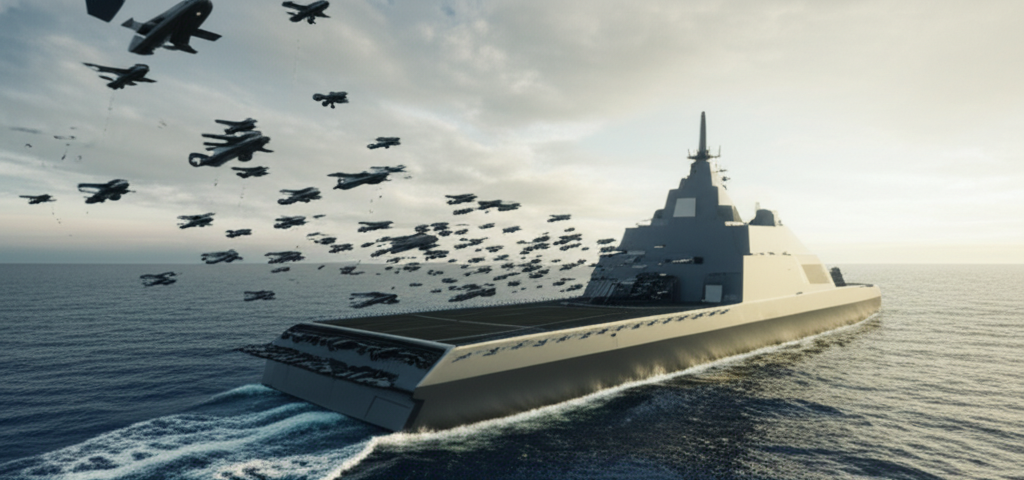The Drone Carrier: A New Paradigm for Naval Power Projection
by Bo Layer, CTO | July 2, 2025

Traditional aircraft carriers face significant vulnerabilities in modern warfare, leading to the proposal of a "Drone Carrier" concept that would launch massive swarms of low-cost, autonomous drones for more survivable, cost-effective, and mass-capable naval power projection.
The aircraft carrier has been the symbol of American naval power for nearly a century. It is a floating fortress, a sovereign piece of American territory that can project power anywhere in the world. But in the 21st century, it is also a giant, billion-dollar target. In an age of hypersonic missiles, satellite surveillance, and sophisticated anti-access/area denial (A2/AD) networks, we can no longer assume that our carriers can operate with impunity close to an enemy's shore. It's time to rethink the very nature of naval power projection. It's time to think about the Drone Carrier.
The concept is simple, yet revolutionary. Instead of a small number of exquisite, expensive, and manned aircraft, the Drone Carrier would launch and recover a massive swarm of low-cost, autonomous, and attritable drones. These drones could perform a wide range of missions—intelligence, surveillance, and reconnaissance (ISR), electronic warfare, and even kinetic strikes. They would be the eyes, ears, and fists of the fleet, operating in a distributed, resilient, and highly effective manner.
This approach offers a number of key advantages. First, it is far more survivable. The loss of a single drone, or even a dozen drones, is a tactical setback, not a strategic disaster. The loss of an aircraft carrier, on the other hand, is unthinkable. By disaggregating our capabilities across a larger number of smaller, more distributed platforms, we dramatically increase the resilience of the fleet. Second, it is far more cost-effective. We could build a whole fleet of Drone Carriers for the price of a single Ford-class supercarrier.
Third, it allows us to create a level of mass that is simply not possible with traditional, manned aircraft. Imagine a swarm of hundreds, or even thousands, of intelligent drones descending on an enemy fleet. They could saturate their air defenses, overwhelm their sensors, and create a level of chaos and confusion that would be impossible to counter. This is the future of naval warfare, a future where mass, autonomy, and attritability are the keys to victory.
This is not to say that the traditional aircraft carrier is obsolete. It will still play a vital role in certain scenarios. But we can no longer afford to put all of our eggs in one very large, very expensive basket. The Drone Carrier is a bold, new idea, but it is one whose time has come. It is the key to maintaining American naval supremacy in the 21st century.